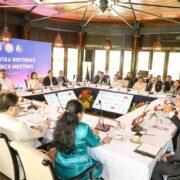The ease of use and convenience experienced by consumers with financial transactions during the pandemic is expected to further boost electronic commerce (e-commerce) post-pandemic.
Dan Wolbert, Visa country manager for the Philippines and Guam, projects e-commerce in the country to “continue to thrive” even after the pandemic.
“We believe that as more people start using digital commerce and platforms, they will embrace the benefits of shopping online, which will lead to the continued growth of e-commerce,” he said in a briefing with the media on Thursday, March 18.
Wolbert also anticipates more businesses to operate on digital platforms as more consumers turn to online shopping to fulfil their needs adding that, “We continue to see more SMEs (small and medium enterprises) going digital.”
Wolbert, discussing the results of Visa’s 2020 Consumer Payment Attitudes study, an annual online survey being conducted on several Asian countries, he said results for the Philippines showed that 52% of the about 1,014 Filipinos surveyed in the country disclosed that they shopped online for the very first time during the pandemic—using mobile apps and websites.
Further, about 43% of the respondents said they made their initial online purchase through social media channels.
The bulk of these initial online financial transactions involve food and groceries, bills payments, and pharmaceutical purchases, with one in four Visa cardholders posting their first e-commerce transaction in the first half of 2020.
Mirroring the results of the central bank findings of decreased cash usage during the pandemic, Visa’s Consumer Payments Attitude study indicated that 53% of the respondents carry cash in their wallets, a drop from around 70 percent level pre-pandemic.
Asked for the reasons for lesser usage of cash for their purchases, the respondents said these e-payments lessen the spread of infection, are more convenient, provide consumers with a financial record, and lower the risk of theft.
In terms of financial transactions that consumers consider can be made completely digital, the respondents cited bills payment, grocery shopping, and overseas travel.
Wolbert said Visa data shows a steady month-on-month rise of contactless transactions in the Philippines since August 2020.
“Even though we’ve made progress in digital payments adoption, there remain huge opportunities for us to encourage more Filipinos to embrace digital payments as we look to expand digital payments acceptance across the country,” he added.






